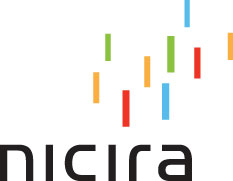VMware / Nicira and the Software Defined Data Center
Ajit Deshpande - July 29, 2012 - 0 Comments
 Last week, VMware announced that it was acquiring early Software Defined Networking leader Nicira for a deal worth ~$1.26 billion. Nicira is a trend-setter in Sotware Defined Networking (Nicira’s founders are also the inventors of OpenFlow), but the company came out of stealth mode only recently. While the company boasts a few marquee customers, its revenues are unknown and possibly close to zero.
Last week, VMware announced that it was acquiring early Software Defined Networking leader Nicira for a deal worth ~$1.26 billion. Nicira is a trend-setter in Sotware Defined Networking (Nicira’s founders are also the inventors of OpenFlow), but the company came out of stealth mode only recently. While the company boasts a few marquee customers, its revenues are unknown and possibly close to zero.
Is this another overpaid acquisition, or is this a smart move for VMWare? A quick comparables analysis suggests that the price might be justified. Insieme, the latest Cisco spin-in, for which Cisco has the option of buying the final 20% stake for $750 million (Cisco already owns 80% of the company through its upfront $100 million investment), will have an implied valuation at acquisition of $3.75 billion. While Insieme’s exact product offering is under wraps, assumptions are that the product will represent a new approach towards SDN . In the context of Insieme as a comparable company, in order for Nicira to justify its current $1.26 billion valuation, it would have to triple in value over the two years or so Insieme might need to develop its SDN product and achieve its $3.75 billion valuation. Such a 3x valuation bump over a two year span for the current SDN leader may not be too implausible, especially considering that Nicira in the hands of VWware might be as potent as Insieme in the hands of Cisco when it comes to shaping the evolution of SDN. Irrespective, one thing has become clear with this acquisition: we are one step closer to a software defined data center, especially for the private cloud.



